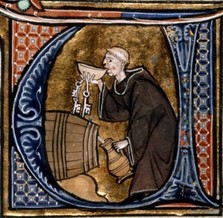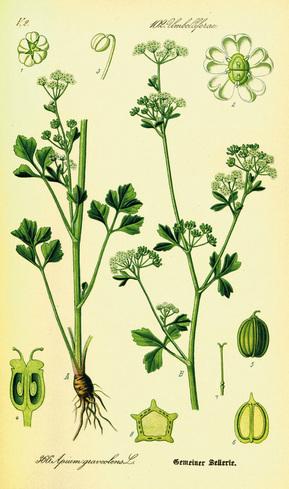|
This is probably Aldobrandino de Siene's claim to fame, as it is a frequently reproduced image from a 13th century illuminated text. Le Régime du corpsThe Le Régime du corps (Regular Care of the Body) is Aldobrandino’s 13th-century text covering all aspects of health (preserving health, care for different parts of the body, diet, and physiognomy [judging someone’s character from facial appearances]). In it, he describes some ailments caused by drinking beer. Whether it is beer brewed from oats, wheat or barley (or a mixture thereof), it harms the head and stomach, gives you bad breath, hurts your teeth, and fills the head with bad fumes (that one may be true). Given that Aldobrandino was Italian (and wrote in French) I would venture to guess there was a strong wine bias here towards beer. In any case, if one must drink a beer, that which is brewed from rye (or rye bread) with mint and wild celery is best. This sounds very interesting. Ingredients
As with most research, I am left with more questions than answers. Would love to know whether rye beers such as this were common, and how it fits into the gruit scene of Medieval Europe. I’m a fan of rye beers, and honestly, I could see a mint / celery combination being pretty tasty, albeit a hard one to nail down. I really need to get my home brewery up and running, so I can give this a try. ResourcesAdamson, Melitta Weiss. Food in medieval times. Greenwood Publishing Group, 2004.
Scully, D. Eleanor, and Terence Scully. Early French cookery: sources, history, original recipes and modern adaptations. University of Michigan Press, 2002.
0 Comments
Leave a Reply. |
Jordan RexBeer archaeologist Archives
November 2017
Categories
All
|


 RSS Feed
RSS Feed
